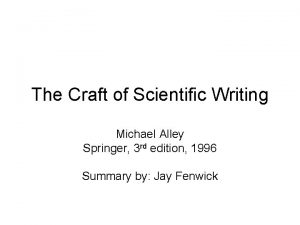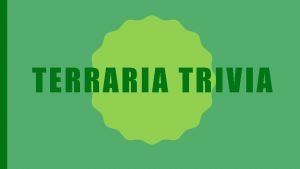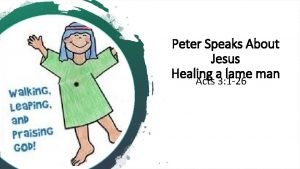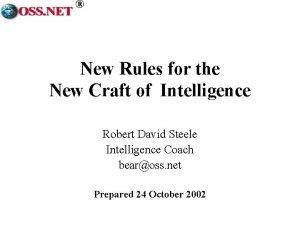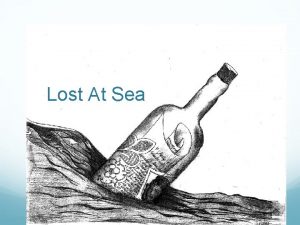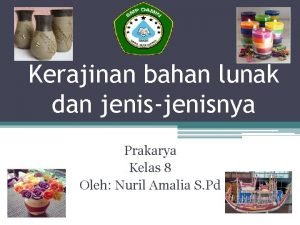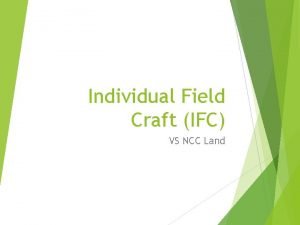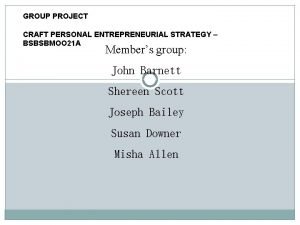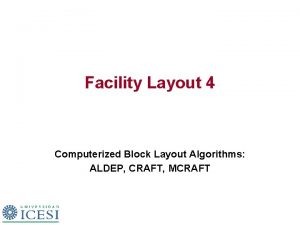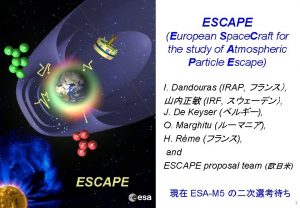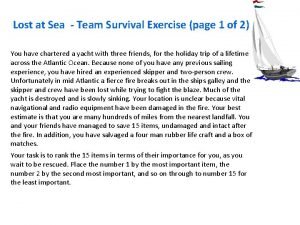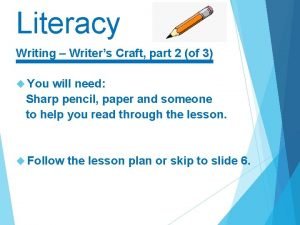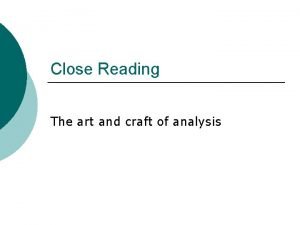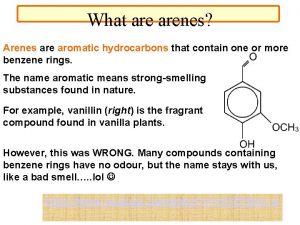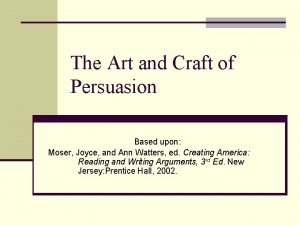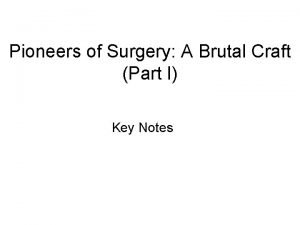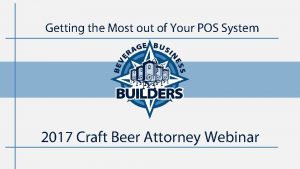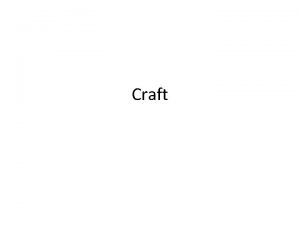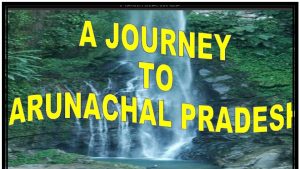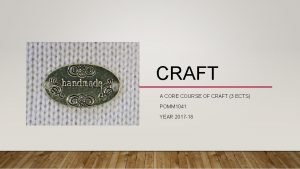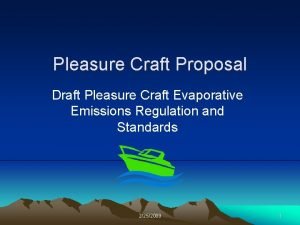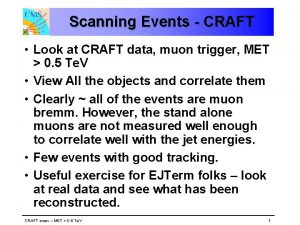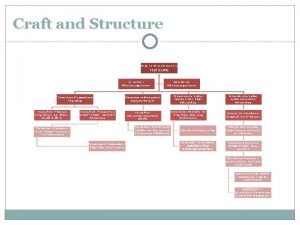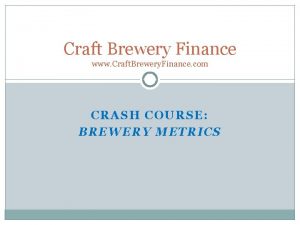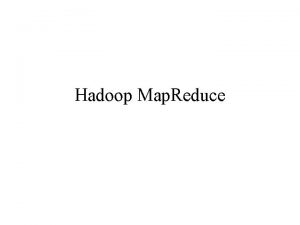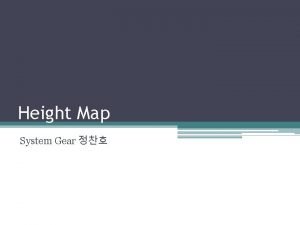Map Craft What is a map A map












































- Slides: 44

Map Craft

What is a map? • A map is a bird’s eye view of a piece of ground drawn to scale

North Point • How many North points are there? – 3 • What are they? – True • Direction of the North pole – Grid • Northerly direction of a North-South grid line – Magnetic • The direction that the north end of a compass needle points

NORTH POLE TRUE NORTH

Scale • Scale can be expressed in 4 ways: 1. As a ratio – 1: 50000 2. By a scale line KILOMETRES 5 MILES 5 0 0 5 10 5 3. In words – 2 cm to 1 km 4. As a fraction – 1/50000 15 20 10 25 15 30 35 20 40 KILOMETRES 25 MILES

Example • 1 cm = 50000 cm on the ground = ½ km therefore 2 cm/1 grid square = 1 km • 1 cm = 25000 cm on the ground = ¼ km therefore 4 cm/1 grid square = 1 km

Question • If we measure a distance on a 1: 50, 000 map of 4 cm what will be the equivalent distance on the ground ? • Answer = 2 km

Identification Panel • Find the identification panel on your map SERIES M 726 SHEET 175 EDITION 8 - GSGS

United Kingdom Grid KILOMETRES 1000 900 800 N O R T H I N G S 700 600 500 400 300 200 100 0 0 100 200 300 400 500 600 700 EASTINGS KILOMETRES

4 -Figure Grid References 71 71 45 N O R T H I N G S 1 46 47 48 49 50 51 70 70 69 69 68 68 67 67 66 66 4 65000 m 44000 m 45 46 47 48 EASTINGS 49 50 4767 51

1 2 3

6 -Figure Grid References 62 9 8 A 5 0 7 6 5 4 Stickcross 3 P 2 1 61 33 1 2 3 4 5 6 7 8 9 34


Questions 1. 2. 3. 4. 5. 6. Brading Station in 6086 Marsh Ho in 6088 644883 634895 Lighthouse in 6489 627893

Answers 1. Brading Station in 6086 • 609868 • 609881 • Church • Caravan park • 648899 • PH (Public House) 2. Marsh Ho in 6088 3. 644883 4. 634895 5. Lighthouse in 6489 6. 627893

Conventional Signs 1 5 6 2 3 4

Line Symbols ROADS AND PATHS A 470 M 4 Service area Junction number Primary Route Bridge A 34 Motorway Major road Dual carriageway unfenced B 5012 Path Secondary road PUBLIC RIGHTS OF WAY Footpath Bridleway Road used as a public path

Electricity transmission line Pipe line (with pylons spaced conventionally) (arrow indicates direction of flow) RAILWAYS Station a) principal b) closed to passengers Track multiple or single, Embankment Cutting, Tunnel Viaduct, Level crossing

Buildings Places of Worship with tower with spire, minaret or dome without such additions Buildings Public buildings (selected) Wind pump Radio or TV mast Windmill with or without sails

Trees and landscapes Orchard Wood Contours are at 10 metres vertical interval 144 Heights are to the nearest metre above mean sea level Quarry outcrop cliff scree Spoil heap, refuse tip or dump

Water Features Marsh or salting Cliff Slopes Towpath Aqueduct Canal Lock Light house (in use) Ford Sand Dunes Lake Light house (disused)

ANTIQUITIES Battlefield (with date) Tumulus TOURIST INFORMATION Parking Camp site Picnic site Public Telephone View point Youth Hostel BOUNDARIES National Trust District National Park or Forest Park

Abbreviations and words Post Office P Club House CH Public House PH Mile Stone MS Public Convenience (in rural areas) Open Air Museum PC Danger Area

1 5 3 2 4

Measuring Distance There are 3 ways of measuring distance: • Estimation – The grid lines on a map are a set distance apart, so it is possible to estimate the distance by counting the squares between two points • Straight Line – This is to measure a distance between two points as the crow flies • Method: Mark off the two points along the straight edge of a strip of paper and measure the distance between the two points against the scale line

• Indirect Distance – This is used to measure a distance along a line feature such as a road, track, river, pylon line, etc. • Method: Lay a straight edge of a strip of paper along the first section, then mark the start point and the end of the first section • Using your pencil point as a pivot, line up the edge with the end of the second section and mark it • Repeat this process until the finish point is reached • Measure the distance between the two points along the scale line • N. B. Try to follow the centre of the road/track as much as possible

Contours • Contour lines – A line joining all points of equal height above sea level • Contour interval – The vertical distance between contour lines • Contour values – Indicate the height of the line and ALWAYS read up the slope, which helps to distinguish the higher and lower ground • Contour spacing – This indicates the severity of the slope – i. e. the closer the lines are together the steeper the slope

• Types of slope – There are three main types of slope • Even • Concave • Convex • Contour patterns – Contour lines can also help in the identification of ground features by their different patterns • Hill • Ridge and saddle • Valley • Spur • Re-entrant



Question • Describe the ground between Warlingham 3658 and Biggin Hill 4158 • Up a gentle slope, down a steeper slope, up through a deciduous forest, back down into a settlement

Cross sections • Have a go at drawing a cross-section

The Lightweight Compass

Bearings • An angle measured in a clockwise direction, from a fixed zero line, that line ALWAYS being NORTH unless otherwise stated • What is the bearing for A and B • A = 45 o / 800 mils • B = 315 o / 5600 mils • Which way is North? – Put the index line to North, turn the whole compass so the compass arrow (red end) is in line with the orientation arrow

Measuring Magnetic Bearings

Measuring Grid Bearings GRID NORTH OP

Converting Bearings • GMA – Grid Magnetic Angle – Information about the GMA can be found at the top centre of the map Grid North Magnetic North MAP GROUND

Grid North Magnetic North GMA

MAG TO GRID GET RID GRID TO ADD MAG

Map Orientation • This is not always necessary but it helps to keep you orientated to the ground you are crossing • Identify objects around you on the map, turn the map until the objects are aligned

Intersection • This is used to find and then plot the position of an object by using bearings taken from at least two different locations • Method – Take magnetic bearings to the object from at least two positions that can be identified on the map 1. e. from two hills to a tank – Convert magnetic to grid bearings – Plot the bearings from their respective bearings – You can now give a 6 -figure grid reference of where the lines intersect – THIS IS THE OBJECT’S LOCATION

Resection

• This is used to find your position by using identified features around you • Method: – Take at least three magnetic bearings to features around you that can be identified on a map – Convert the magnetic bearings to grid bearings – Change the grid bearings to back bearings – Now plot these new bearings from their respective positions – It is now possible to give a 6 -figure grid reference of where the lines cross – THIS IS YOUR LOCATION

Task • Where are you? – You have measured the following magnetic bearings from your position • Church in 4344 = 870 • Church in 3645 = 3070 • Church in 3642 = 2480 • Answer = Lingfield Train Station
 Chinese knot material
Chinese knot material Craft distilling expo
Craft distilling expo The craft of scientific writing
The craft of scientific writing Craft of scientific presentations
Craft of scientific presentations Terraria white tuxedo
Terraria white tuxedo Storage craft reseller
Storage craft reseller Rokodelstvo art & craft slovenija
Rokodelstvo art & craft slovenija Playcraft playgrounds
Playcraft playgrounds Peter heals the lame man craft
Peter heals the lame man craft Robert david steele the new craft of intelligence
Robert david steele the new craft of intelligence Lost at sea ranking chart
Lost at sea ranking chart Prakarya kerajinan bahan lunak
Prakarya kerajinan bahan lunak Field craft definition
Field craft definition Craft personal entrepreneurial strategy learner guide
Craft personal entrepreneurial strategy learner guide Craft feedback
Craft feedback Corelap software free download
Corelap software free download Craft layout example
Craft layout example Craft production system
Craft production system Craft moves
Craft moves Dream catcher belief
Dream catcher belief Literature craft and voice
Literature craft and voice Literature craft and voice
Literature craft and voice Presenters name
Presenters name Space craft escape
Space craft escape Craft knife definition
Craft knife definition What is authors craft
What is authors craft Writers craft examples
Writers craft examples Contoh teknologi craft
Contoh teknologi craft Lost at sea exercise powerpoint
Lost at sea exercise powerpoint Writer s craft
Writer s craft Black bat craft
Black bat craft Gambar
Gambar Craft film school
Craft film school Close reading the art and craft of analysis
Close reading the art and craft of analysis Author's craft figurative language
Author's craft figurative language Language craft and structure
Language craft and structure No2ch2ch2ch3
No2ch2ch2ch3 The art and craft of persuasion
The art and craft of persuasion Brutal craft
Brutal craft Karen yager craft of writing
Karen yager craft of writing Taproom pos system
Taproom pos system Craft expression
Craft expression Acts 4:32-37 craft
Acts 4:32-37 craft Art and craft of arunachal pradesh
Art and craft of arunachal pradesh Author's purpose great gatsby
Author's purpose great gatsby


